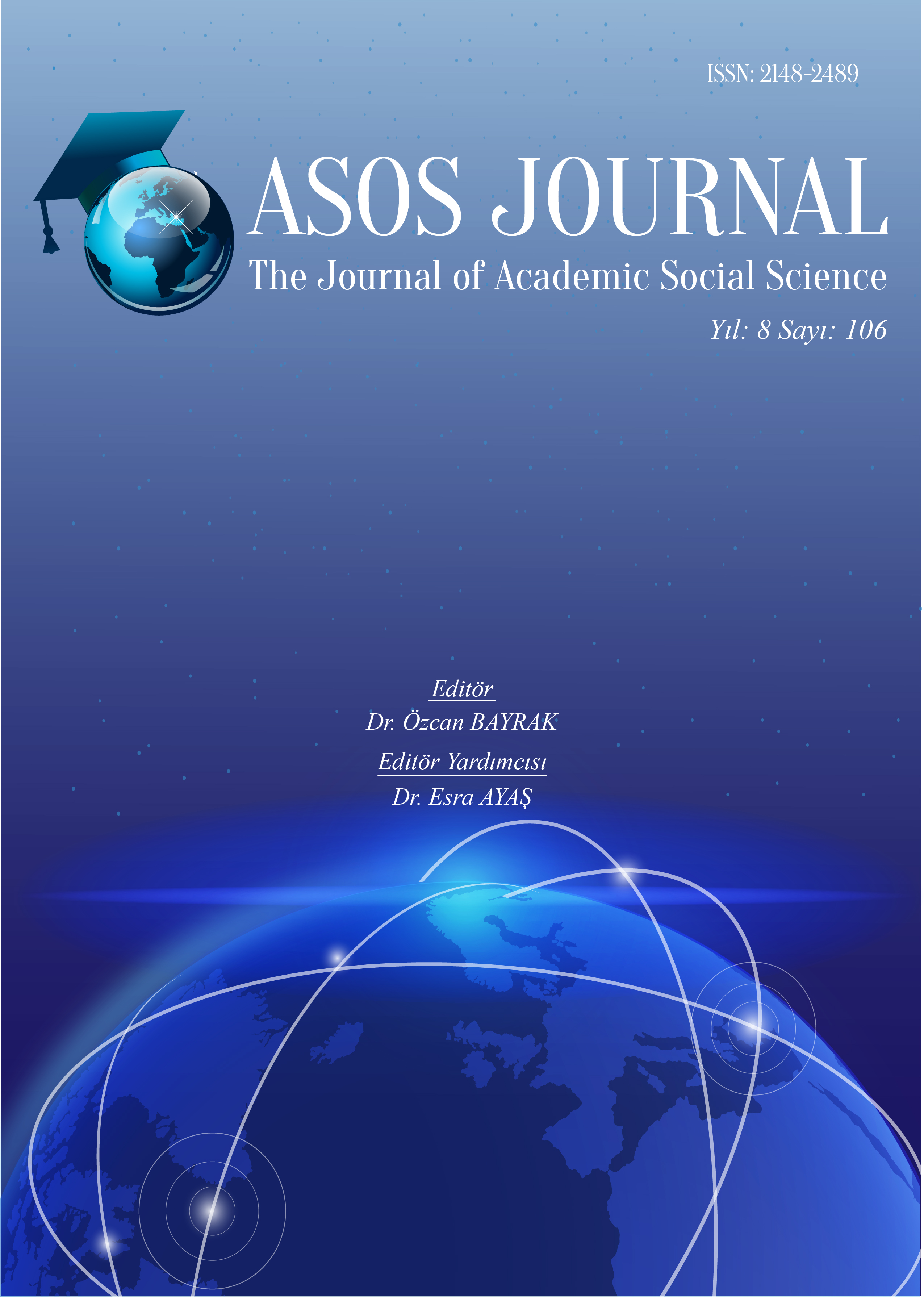Author :
Abstract
Osmanlı Devleti’nde adalet esas olarak kadı mahkemelerinde sağlanmaya çalışılmıştır. Kadı mahkemelerinin adaleti sağlayamadığı durumlarda devletin merkezinde yer alan en yüksek yargı organı vasfını da bünyesinde barındıran Divan-ı Hümayun bir üst mahkeme görevini görmüştür. Ahkam Defterleri, 1742 yılından itibaren Osmanlı coğrafyasında 17 eyalet için oluşturulan ve halkın şikayetlerini içeren defterlerdir. Ahkam Defterleri’nin oluşturulmasında temel amaç yerelde tesis edilemeyen adaletin merkez eliyle oluşturulmasıdır. Antakya, Halep Eyaletine bağlı en büyük sancaktır. Ahkam Defterleri, tımar, vakıf, borç-alacak, bireysel şikayetler, vergiler, eşkıyalık, Müslim-Gayrimüslim ilişkilerini kapsayan zengin bir arşiv malzemesi sunması açısından şehir tarihi için vazgeçilmez bir kaynaktır. Bu defterler aynı zamanda devletin merkezini temsil eden Divan-ı Hümayun’un taşraya ve oradaki sorunlara bakışını yansıtan resmi belgelerdir.
Keywords
Abstract
In the Ottoman Empire, justice was tried to be established mainly in the kadı courts. In cases where the kadı courts cannot establish justice, Divan-ı Hümayun, which includes the highest judicial body in the center of the state, has served as a higher court. Ahkam Defters are the records that have been created for 17 provinces in the Ottoman geography since 1742 and contain public complaints. The main purpose in the formation of the Ahkam Defters is the establishment of justice, which cannot be established locally, by the center. Antioch is the biggest sanjak of Aleppo Province. Ahkam Defters are an indispensable resource for the history of the city in terms of providing a rich archive material including timar, foundations, debt-receivables, individual complaints, taxes, banditry and Muslim-Non-Muslim relations. These defters are also official documents that reflect the view of Divan-ı Hümayun, which represents the center of the state, to the countryside and the problems there.
Keywords
- Emecen, Feridun M., (2005), “Osmanlı Divanının Ana Defter Serileri: Ahkâm-ı Mîrî, Ahkâm-ı Kuyûd-ı Mühimme ve Ahkâm-ı Şikâyet”, Türkiye Araştırmaları Literatür Dergisi (TALİD), C. 3, S. 5, s. 107-139, İstanbul.
- Emecen, Feridun M. (1994), “Devre Çıkma”, Diyanet İslam Ansiklopedisi (DİA), C.IX, s.250- 251, İstanbul.
- İnalcık, Halil, (1965), “Adaletnameler”, Belgeler, S.II, s.49-142, Ankara.
- Kütükoğlu, Mübahat S., (2006), “Mühimme Defterleri”, Diyanet İslam Ansiklopedisi (DİA), C.XXXI, s.520-523, İstanbul.
- Aktaş, Necati, (1991) “Atik Şikâyet Defteri”, Diyanet İslam Ansiklopedisi (DİA), C.IV, s.68,
- Konan, Belkıs (2015) “Gayrimüslim Osmanlı Vatandaşlarının Hukuki Durumuna İlişkin Bir Değerlendirme”, Ankara Üniversitesi Hukuk Fakültesi Dergisi (AÜHFD), S. 64, s.171193, Ankara.
- Okur Gümrükçüoğlu, Saliha, (2010), “Şikâyet Defterleri Işığında Osmanlı Hukuku ve Uygulaması (1649-1653)”, Basılmamış Doktora Tezi, Marmara Üniversitesi, Sosyal Bilimler Enstitüsü, İstanbul.
- Üzüm, İlyas, (1998), “Hüküm”, Diyanet İslam Ansiklopedisi (DİA), C. XVIII, s.464-466,





